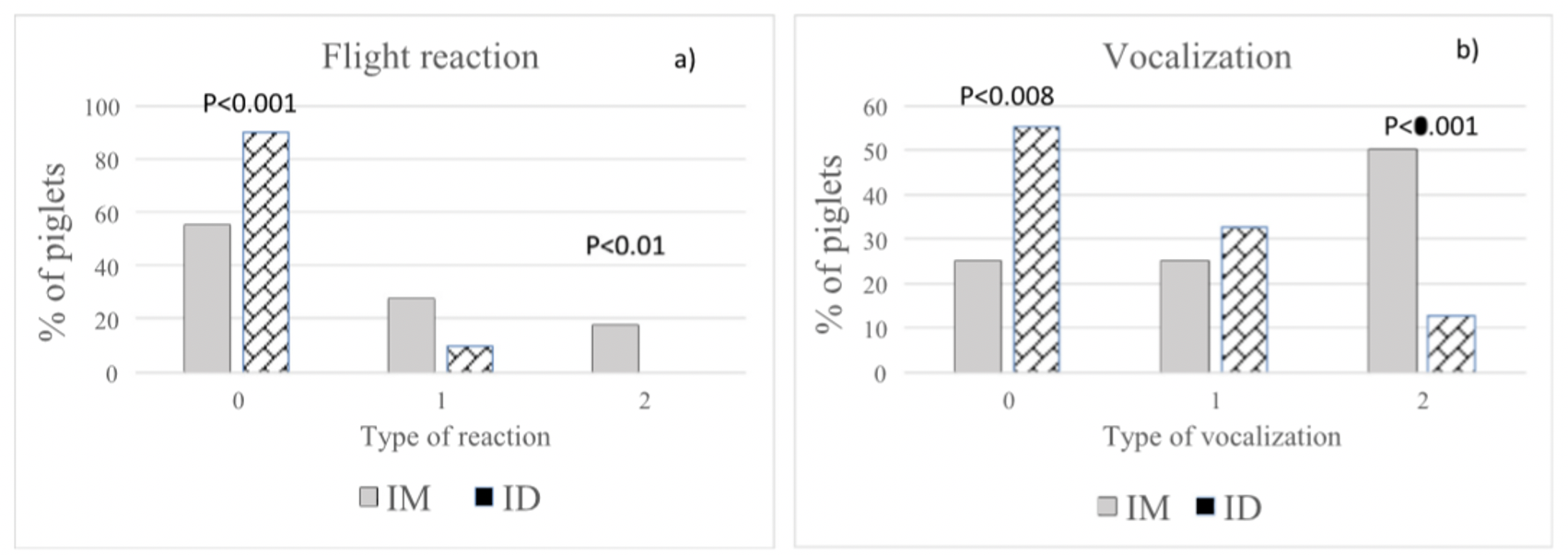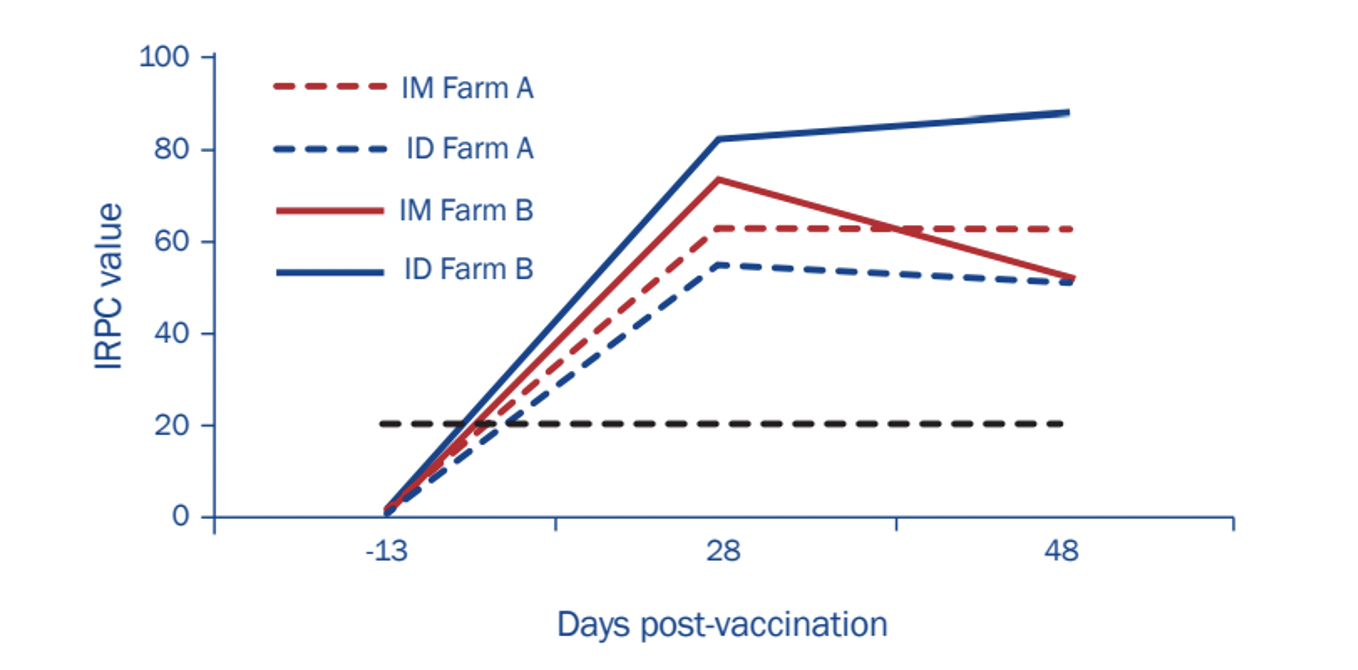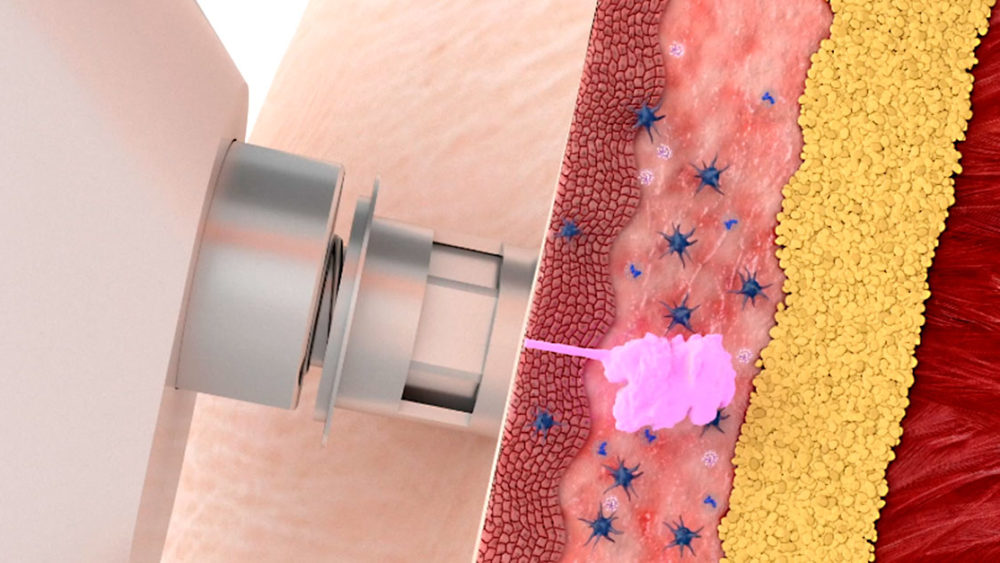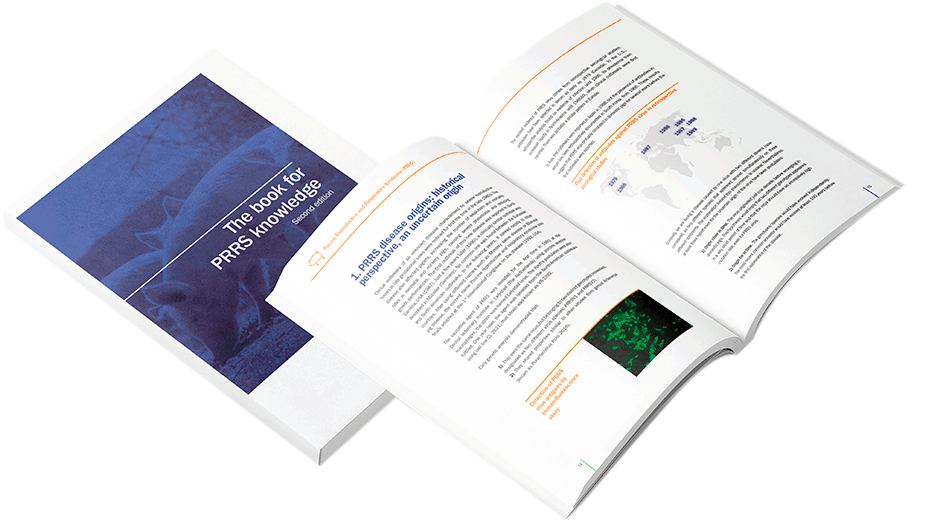What kind of immunological benefit can we expect through ID route?
The intradermal route is used in many vaccination protocols in humans and animals.
The notion behind the use of this route is to take advantage of the excellent antigen presenting capabilities of dermal dendritic cells as well as to reduce the interference created by the presence of maternally-derived antibodies (MDA) in very well irrigated tissues (such as the muscle).

FIGURE 1: The dermis represents an excellent site for vaccine delivery, being rich in resident dendritic cells (DC), lymph vessels and blood capillaries.
In addition, the use of needleless devices for administering the vaccine improves animal welfare.

FIGURE 2:
A) Flight reaction in intramuscular (IM) and intradermal (ID) vaccinated piglets
B) Vocalization of intramuscular (IM) and intradermal (ID) injected piglets during vaccination.
Intramuscular & intradermal vaccination
In the case of PRRSV vaccination it has been shown that the intradermal administration is at least equal to the intramuscular administration of live vaccines.

FIGURE 3: Group means of the IRPC value of the PRRSV antibody response in serum of individual animals vaccinated via the IM or the ID route on Farms A and B.
In principle, intradermal administration does not result in a faster priming of the immune response.
At present, there is no definitive evidence that with PRRSV intradermal vaccination there is less interference with the MDA.
If you want to know more about the differences founded between intramuscular and intradermal vaccination, please visit our section Publications.
You can ask your own question! Visit Pig333.com and submit your question to the experts.
References
A. Scollo et al., Livestock Science 233 (2020) 103939.
Busquet, M. et al.; IPVS & ESPHM Congress 2016.

Centre for Research on Animal Health (CReSA), Barcelona University (UAB) – Spain




